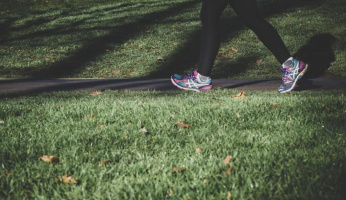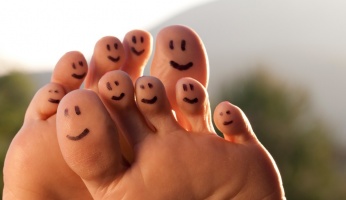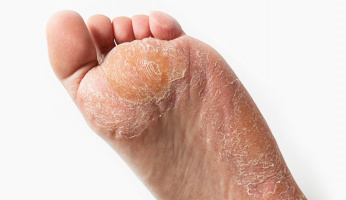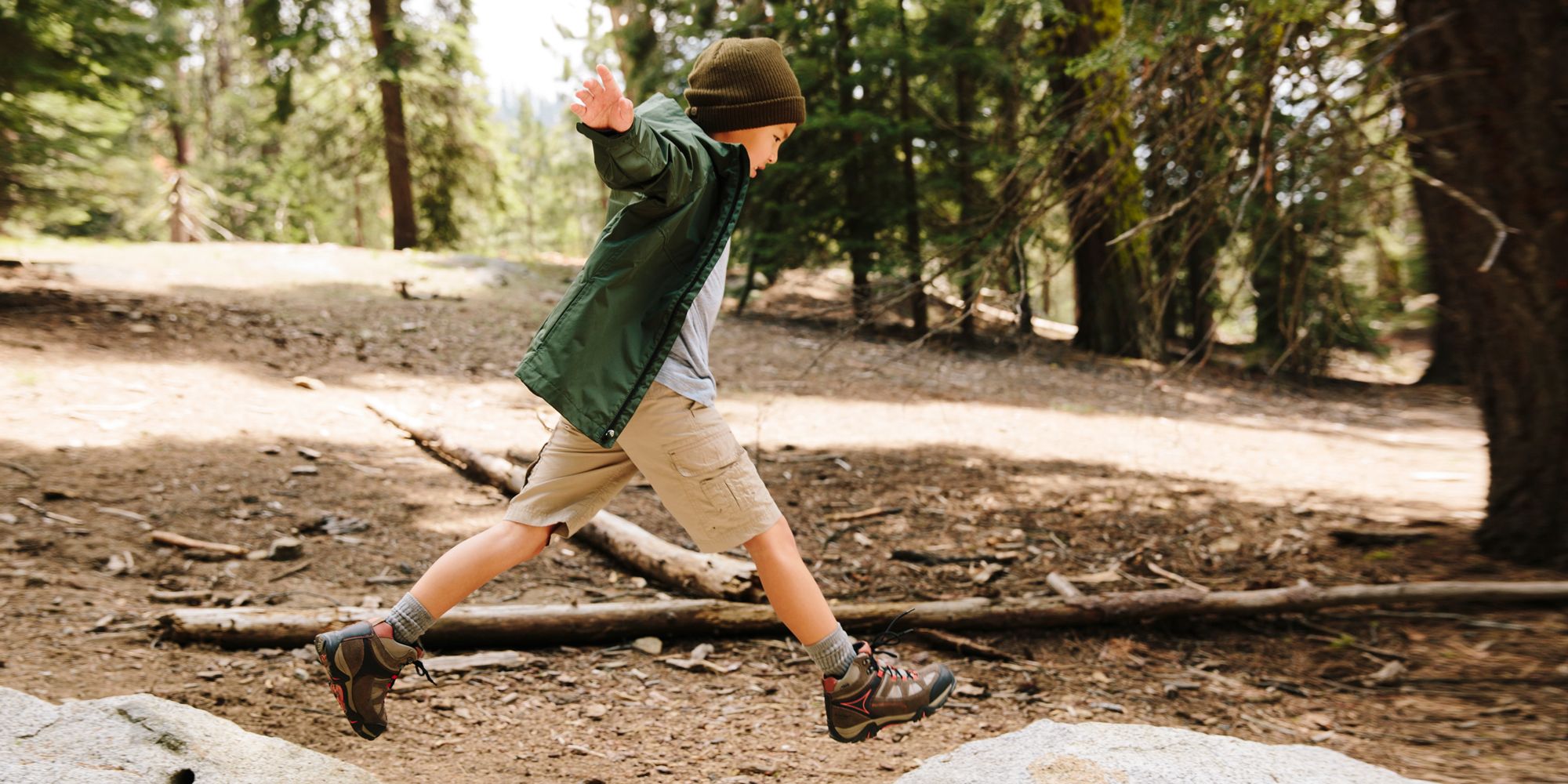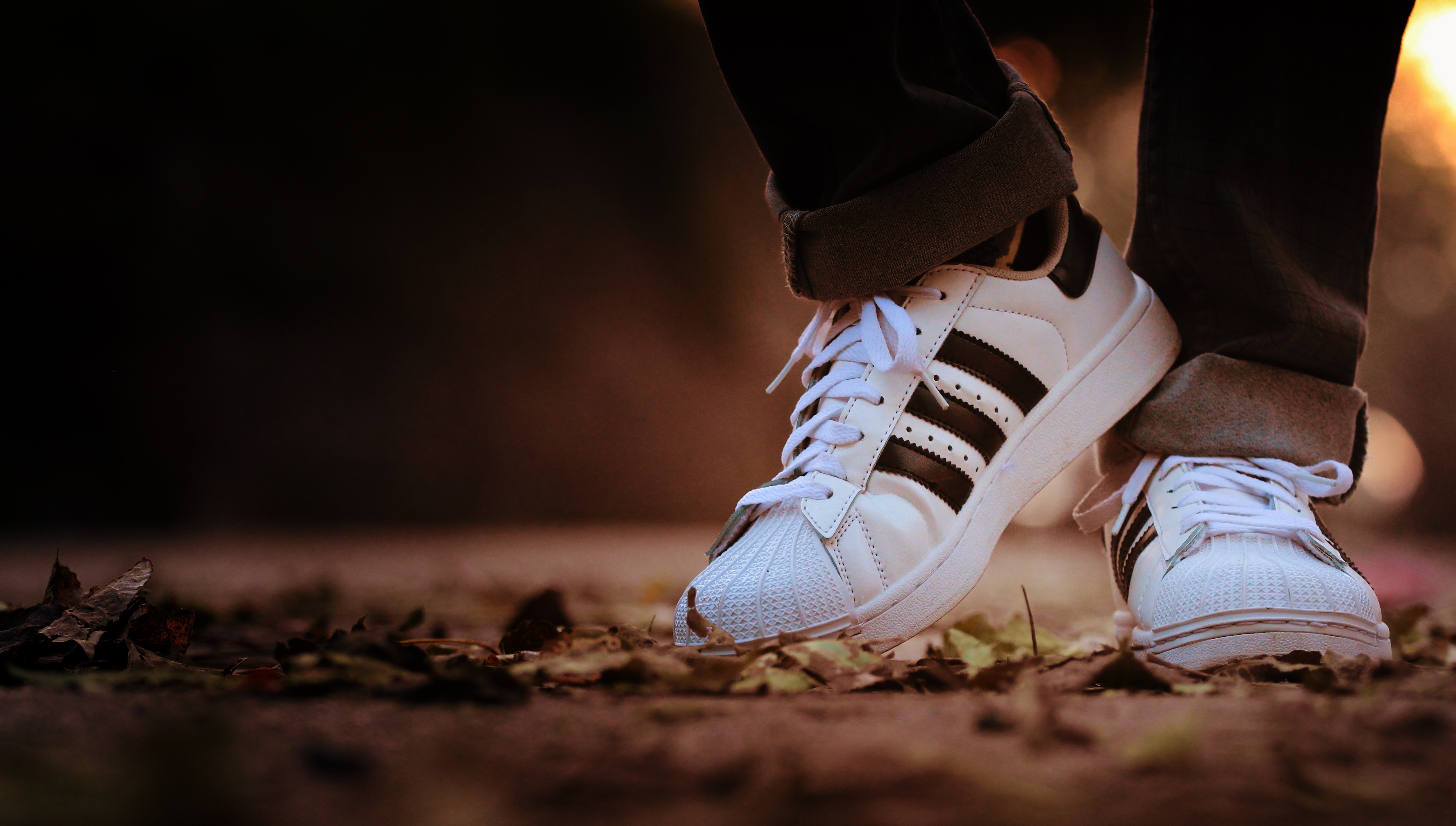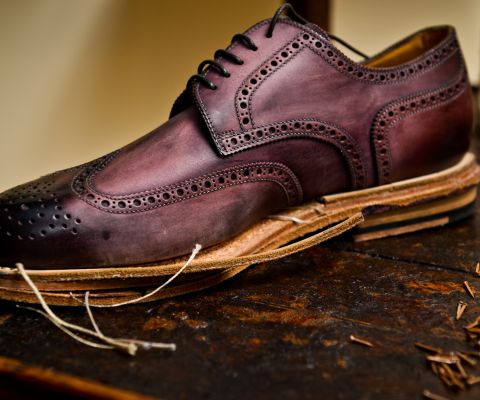The Difference Between Over and Under Pronation!
 The Difference Between Over and Under Pronation! www.walkjogrun.net
The Difference Between Over and Under Pronation! www.walkjogrun.net The pronation of your feet is the degree to which your feet/ankle roll inward (overpronation) or outward (underpronation) when hitting the ground after propelling yourself forward during running or walking.
The goal is to have neutral pronation.
And many studies show that the improper landing of your feet while running increase the risk of injury and can lead to pain.
So, let’s get into discussing overpronation vs. underpronation.
What is overpronation?
Overpronation, also known as having flat feet or eversion, is when your foot rolls inward greater than 15% while walking or running.
With overpronation, you will notice that your running shoes have excess wearing on the inner side of the sole.
Minor injuries and pain that may be a result of overpronation are:
- Lower back pain
- Outer knee pain
- Stress fractures
- Plantar fasciitis
Later, I will let you know how you can correct overpronation with a few exercises.
What is underpronation?
Underpronation is when your foot rolls to the outside of the foot. You will see that the soles of your shoes are worn on the outer areas of the sole. And it is also known as excess supination and inversion.
Underpronation often results in injuries due to leg stiffness and increased impact. The underpronated foot is less flexible and unable to absorb the force of your foot striking the ground effectively.
This can lead to hip, knee, and back pain, plantar fasciitis, and Achilles tendonitis.
How do I tell if I overpronate or underpronate?
There are a few ways to see if you are overpronated vs. underpronated.
- Look at the bottom of your shoes. As stated earlier, if there is more wear on the inner edge of your shoes, overpronation. More wear on the outer edges, underpronation.
- Take a piece of a brown paper bag, wet your feet, and stand on it. If there is no print of your arch or a minimal mark on the paper, your feet have excess supination.
- Schedule a visit with a Podiatrist or a Physical Therapist
- Go to your local Run Shop for an evaluation
Can you have flat feet and underpronation?
Yes, you can have flat feet and underpronate.
This can result from wearing a pair of shoes that do not provide arch support, fit improperly, are too tight and rigid, or are worn out.
But, you may also have a misalignment somewhere, or it could result from an old injury.
Other causes:
- Sedentary lifestyle
- Stiffness
- Over-exercising
- Standing for too long
- Limited range of motion
Is high arch underpronation?
Underpronation is usually characterized as having a high arch, but as you have read above, an individual with flat feet can also experience underpronation.
How do you fix overpronation and underpronation?
Overpronation and underpronation can be fixed by doing a few exercises, stretches, wearing properly fitted shoes, motion-control shoes or stability shoes, walking and running with correct form, having a massage, wearing custom orthotics/insoles, and getting an evaluation from your Podiatry or Physical Therapist.
4 overpronation exercises:
- Pick up small items with your toes
- While seated using an elastic band, stretch your foot inward and out
- Lying on the floor on your right side, bend the knee on the floor and lift the leg on top for 8 seconds up and 8 seconds down (repeat on the opposite side)
- Core strengthening exercises including the superman pose, the bridge pose, and floor ankle taps
Each exercise should be performed for 1.5 minutes on each leg or 3 minutes total.
3 underpronation stretches:
- Calf stretches: place both hands on the wall, step back with one foot, and keep both feet flat (you should feel this in the back of your leg); hold for 30 seconds on each leg and repeat up to 3 times.
- Plantar fascia stretch: sitting in a chair, place your right ankle over your left knee; with your left hand, pull your toes back towards your ankle (you should be able to feel the tight band on the bottom of your foot with your opposite hand); hold for 10 seconds on each foot and repeat up to 20 times. Best if done every morning.
- Knee stretch: while standing; place your right leg behind your left, bend over to the left side, not forward (you should feel a stretch along the outside of the right knee); hold for 10 seconds on each leg and repeat up to 3 times.
Conclusion
The best offense for injury and pain is prevention. If you notice excess wearing on your shoes’ inner or outside edges, ask for gait analysis by your Podiatrist or Physical Therapist.
Sources
- , What to know about supination of the foot, Medical Website
- , The Beginner's Guide to Pronation, Medical Website
- , Modification of Pronated Foot Posture after a Program of Therapeutic Exercises, Journal
- , The Association Between Rearfoot Motion While Barefoot and Shod in Different Types of Running Shoes in Recreational Runners, Journal of sports science & medicine, 19(2), 383–389





